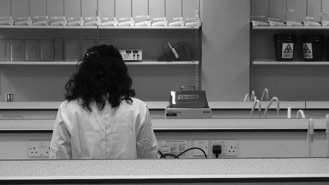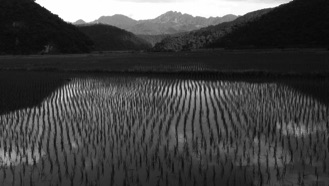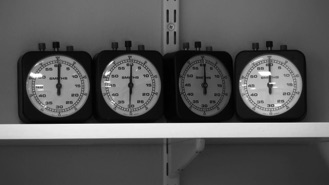Laboratory Film
Screenings / Exhibitions
• 'Bending Time', www.labocine.com, August 2017 issue.
• Screening: Free Range City Festival, Rutherford College, University of Kent (March 19, 2016)
• Sex and Drugs and IVF - Woolf College, University of Kent (September 5, 2015). Organised by the Centre for Interdisciplinary Studies of Reproduction as part of the University of Kent 50th Anniversary Festival.
• Free Range - Mrs Jones’ Kitchen, Canterbury (February 26, 2015). Screened with live soundtrack composed and performed by Sam Bailey (piano), with the Leon String Quartet.
• Chain Reaction - 30 years of PCR: Art, Science, History. Sidney Cooper Gallery, Canterbury (November 22 - December 21, 2013).
This project develops out of my interest in cinematic time – in particular how, as spectators, we experience duration, and how cinema is able to represent simultaneity. In recent years I have been working on a series of ‘empty’ films in which content is drained out – or at least reduced – so that the viewer’s attention can be focused on those forms, styles and qualities of cinema that are hard to perceive in content-driven work. In Laboratory Film I wanted to make duration tangible – to make a film in which time is not simply an idea, or an ‘invisible’ container for a series of things that happen, but rather a film in which time itself it attains a certain density and weight. PCR takes time. It can take several hours for a PCR machine to amplify a DNA sequence. Laboratory Film was thus conceived as a piece that would echo or mimic or mirror the temporal duration of a PCR experiment.
The film also explores the idea that multiple events and multiple spaces co-exist, even though we are rarely aware of this multiplicity. When we leave a space – particularly the everyday spaces of the workplace or the home – we tend to forget about them as our attention engages with the changing environment around us, and moves to other tasks, other objects. But of course, those spaces continue to contain objects and continue to host events despite our absence. In Laboratory Film I wanted to explore the space of the lab after the scientist (Maryam Sadraie) has left the PCR machine to run through its programme. But why stop there? So once the camera has explored the ‘empty’ lab, it continues to move through a succession of other spaces while the PCR machine performs its series of cycles and the scientist goes about her daily business.
The lab – workplace of the scientist – is an institutional space, and one that has its own style and particular beauty: a beauty that is often overlooked because institutional spaces become so familiar to us. In Laboratory Film the camera turns its attention on these familiar institutional spaces, carving out a piece of time for each of the objects and spaces it examines, and offering duration as a taste of time itself.


